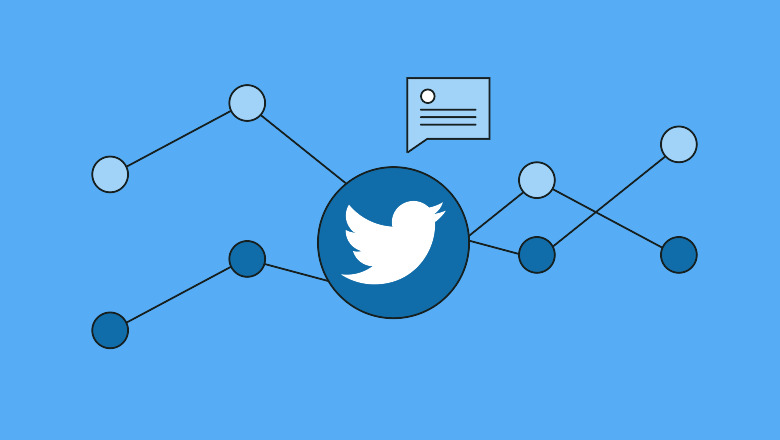In today’s digital age, social media platforms have become a treasure trove of information and insights. Among these platforms, Twitter stands out as a microblogging site where users share their thoughts, opinions, and emotions in succinct 280-character messages called tweets. These tweets provide a valuable opportunity to explore and analyze the sentiments of individuals on various subjects. Sentiment analysis of Twitter data has gained immense significance in understanding public perception, consumer behavior, and even predicting market trends.
Sentiment Analysis of Twitter Data: Decoding Emotions in 280 Characters

Understanding Sentiment Analysis
Sentiment analysis, also known as opinion mining, is a computational process that involves extracting and categorizing opinions expressed in text as positive, negative, or neutral. In the context of Twitter data, this analysis helps us decipher the emotional tone of tweets and gain insights into the sentiments of the users behind them.
The Importance of Sentiment Analysis
- Unearthing Public Opinion: Sentiment analysis allows us to gauge public sentiment about a particular topic, event, or product. By analyzing tweets, we can identify prevailing sentiments, such as excitement, frustration, or indifference.
- Business Insights: Companies use sentiment analysis to understand how customers feel about their products and services. Positive sentiment indicates customer satisfaction, while negative sentiment suggests areas for improvement.
- Political Landscape: In the political realm, sentiment analysis helps analyze public responses to policies, speeches, and events. This can guide decision-making and campaign strategies.
The Process of Sentiment Analysis
1. Data Collection and Preprocessing
Before sentiment analysis can begin, a substantial amount of Twitter data needs to be collected. This data includes tweets related to the topic of interest. Once collected, the data undergoes preprocessing, which involves removing special characters, links, and irrelevant information.
2. Text Classification
Text classification is a crucial step in sentiment analysis. Machine learning algorithms are trained on labeled datasets to recognize patterns in text that correspond to positive, negative, or neutral sentiments. These algorithms learn to identify keywords, sentence structure, and even context to accurately classify sentiments.
Challenges in Sentiment Analysis Of Twitter Data
While sentiment analysis is powerful, it comes with its own set of challenges:
- Sarcasm and Irony: Detecting sarcasm and irony in text can be tricky for algorithms, as these rely heavily on context.
- Contextual Understanding: Words can have different meanings in different contexts. Algorithms must be able to interpret the context accurately.
- Cultural Nuances: Sentiments can be expressed differently in various cultures and languages. Algorithms may struggle to understand these nuances.
Applications of Sentiment Analysis
1. Brand Reputation Management
Companies closely monitor social media sentiment to protect their brand reputation. Negative sentiment trends can be identified early, allowing companies to address issues promptly.
2. Product Launches and Marketing
Sentiment analysis aids in gauging public anticipation for a product launch. Feedback gathered from social media can influence marketing strategies.
3. Political Campaigns
Politicians analyze Twitter sentiment to tailor their messages and campaign strategies to align with public sentiment.
Conclusion
Sentiment analysis of Twitter data is a powerful tool that provides insights into the emotions and opinions of individuals. It has applications across various domains, from business to politics. By harnessing the capabilities of machine learning and natural language processing, sentiment analysis allows us to tap into the collective voice of millions of Twitter users and uncover valuable insights.
Are you ready to harness the power of sentiment analysis for your business? Request a demo from AIM Technologies today and discover how our advanced tools can help you make data-driven decisions based on the emotions of your target audience.
Frequently Asked Questions
What is sentiment analysis?
- Sentiment analysis is a process that involves determining the emotional tone (positive, negative, or neutral) of a piece of text, such as tweets.
How is sentiment analysis performed on Twitter data?
- Sentiment analysis on Twitter data involves collecting tweets, preprocessing the text, and then using machine learning algorithms to classify sentiments based on patterns.
Can sentiment analysis accurately detect sarcasm?
- Detecting sarcasm in the text remains a challenge for sentiment analysis algorithms due to their reliance on context and tone.
What are the business applications of sentiment analysis?
- Businesses use sentiment analysis to understand customer satisfaction, monitor brand reputation, and tailor marketing strategies.
How does sentiment analysis impact political campaigns?
- Sentiment analysis helps politicians gauge public sentiment and adjust their campaign strategies accordingly.


